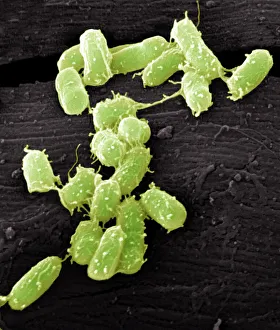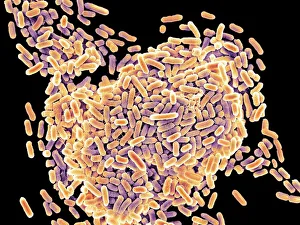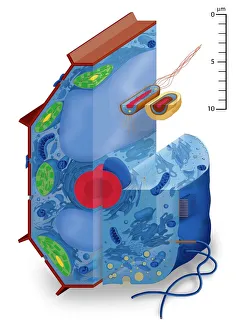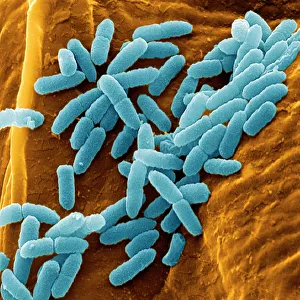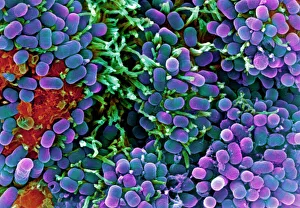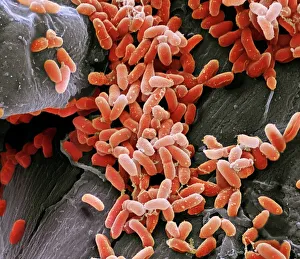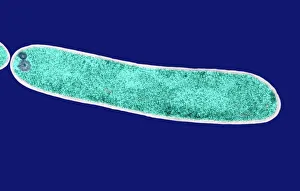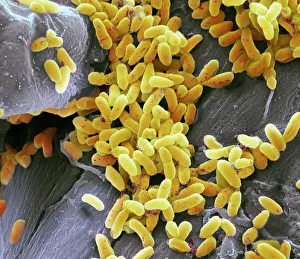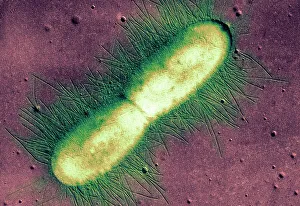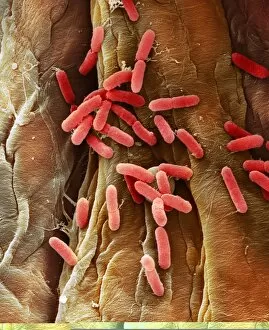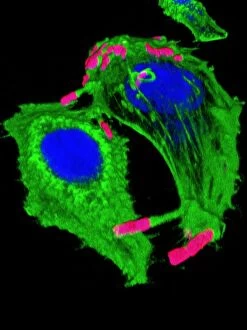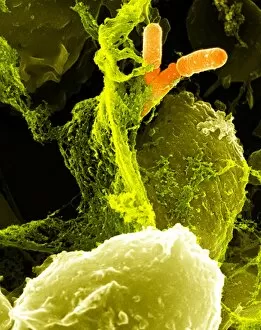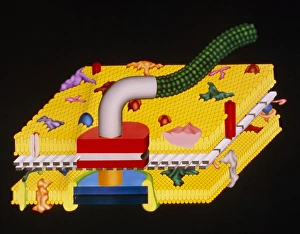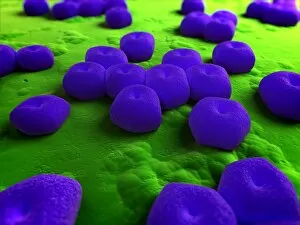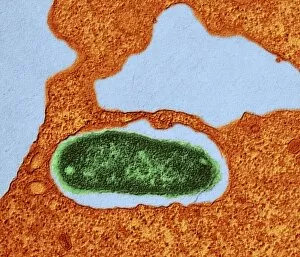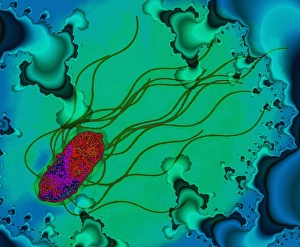Gram Negative Collection
"Exploring the Intricate World of Gram-Negative Bacteria
All Professionally Made to Order for Quick Shipping
"Exploring the Intricate World of Gram-Negative Bacteria: A Visual Journey" Step into the microscopic realm and witness the fascinating world of gram-negative bacteria through scanning electron microscopy (SEM) and transmission electron microscopy (TEM). First, we encounter E. Coli bacteria, their slender rod-like bodies captured in stunning detail by SEM. These notorious inhabitants of our intestines remind us of their presence and importance in both human health and scientific research. Moving on, Salmonella bacteria come into view under SEM, showcasing their unique shape and surface features. These pathogens are responsible for causing foodborne illnesses but also serve as valuable models for studying bacterial infection mechanisms. But it's not just about disease-causing organisms; artistry can be found even at the cellular level. Admire the intricate artwork created by different cell types - a testament to nature's creativity. Next up is Pseudomonas aeruginosa bacteria seen through SEM, revealing their distinctive appearance with flagella protruding from their surfaces. Known for causing infections in immunocompromised individuals, these versatile microbes have become a focus of intense scientific investigation. Switching to TEM imagery, we zoom in closer on an individual E. Coli bacterium – its internal structures visible with astonishing clarity. This technique allows scientists to delve deeper into understanding cellular processes within these tiny entities. Returning to SEM visuals, Pseudomonas aeruginosa once again takes center stage – this time displaying intricate details that make them stand out among other gram-negative species. TEM provides another glimpse inside an E. coli bacterium - unveiling its inner workings like never before. This high-resolution imaging helps researchers uncover new insights into bacterial physiology and pathogenesis. Lastly, Salmonella typhimurium bacteria appear under SEM magnification – reminding us once more of the complex interplay between humans and microorganisms that can lead to illness or symbiotic relationships. In this captivating visual journey through various techniques, we witness the beauty and complexity of gram-negative bacteria.

